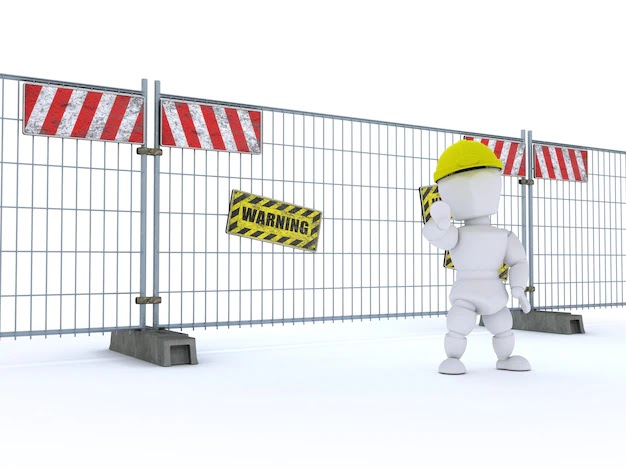
How to Develop a Growth Mindset
I. Understanding the Growth Mindset
A growth mindset contrasts with a "fixed mindset," which assumes that abilities and intelligence are static traits. Individuals with a fixed mindset tend to avoid challenges, give up easily, and view effort as fruitless. Conversely, those with a growth mindset embrace challenges, persist through setbacks, and see effort as essential for mastery.
This fundamental difference in perspective shapes how individuals handle problems. With a growth mindset, problems are not roadblocks but stepping stones to learning and improvement.
II. Why Adopting a Growth Mindset Matters
1. Encourages Resilience: Viewing challenges as opportunities helps you bounce back from failure with renewed vigor.
2. Fosters Innovation: A growth mindset inspires creative problem-solving and the willingness to experiment.
3. Builds Confidence: Recognizing your capacity for growth reinforces self-belief and encourages continuous learning.
4. Improves Relationships: A growth mindset promotes better communication and collaboration, as you value feedback and collective improvement.
1. Reframe Problems as Learning Opportunities: When faced with a challenge, ask yourself:
a) What can I learn from this?
b) How can this situation help me grow?
For instance, if you fail a project, instead of dwelling on the failure, identify the areas for improvement and plan actionable steps to address them. This shift in perspective helps transform setbacks into valuable experiences.
2. Embrace Effort and Perseverance: Effort is not a sign of weakness; it’s the key to growth. Remind yourself that mastery requires consistent practice and resilience. Celebrate small wins along the way to stay motivated.
3. Cultivate Curiosity and Openness to Feedback: Be curious about what you don’t know. Seek feedback from others, and view criticism as an opportunity to refine your skills. Instead of feeling defensive, ask constructive questions like:
a) What could I have done differently?
b) How can I improve for next time?
4. Surround Yourself with Growth-Oriented People: Your environment plays a significant role in shaping your mindset. Spend time with people who inspire you to improve, share your goals, and encourage you to push your limits. Positive influences can reinforce a growth mindset.
5. Develop Self-Awareness: Recognize when a fixed mindset takes over. Phrases like "I’m just not good at this" or "This is too hard" are indicators of limiting beliefs. Replace them with growth-oriented affirmations such as "I can improve with practice" or "Every expert was once a beginner."
6. Adopt a "Not Yet" Mentality: Instead of saying, "I can’t do this," say, "I can’t do this yet." This subtle shift acknowledges that skills take time to develop and reinforces the idea that growth is a process.
7. Learn from Role Models: Study individuals who embody a growth mindset. Read biographies of successful people who overcame challenges to achieve greatness. Their stories can inspire you to reframe your own obstacles.
8. Practice Gratitude: Gratitude shifts your focus from what’s lacking to what’s possible. Each day, write down three things you’re grateful for, especially lessons learned from challenges. This practice helps maintain a positive and growth-oriented outlook.
Even with the best intentions, adopting a growth mindset can be challenging. Here’s how to tackle common barriers:
1. Fear of Failure: Instead of fearing failure, reframe it as a natural part of the learning process. Failures are feedback, not the final word.
III. Strategies for Developing a Growth Mindset
1. Reframe Problems as Learning Opportunities: When faced with a challenge, ask yourself:
a) What can I learn from this?
b) How can this situation help me grow?
For instance, if you fail a project, instead of dwelling on the failure, identify the areas for improvement and plan actionable steps to address them. This shift in perspective helps transform setbacks into valuable experiences.
2. Embrace Effort and Perseverance: Effort is not a sign of weakness; it’s the key to growth. Remind yourself that mastery requires consistent practice and resilience. Celebrate small wins along the way to stay motivated.
3. Cultivate Curiosity and Openness to Feedback: Be curious about what you don’t know. Seek feedback from others, and view criticism as an opportunity to refine your skills. Instead of feeling defensive, ask constructive questions like:
a) What could I have done differently?
b) How can I improve for next time?
4. Surround Yourself with Growth-Oriented People: Your environment plays a significant role in shaping your mindset. Spend time with people who inspire you to improve, share your goals, and encourage you to push your limits. Positive influences can reinforce a growth mindset.
5. Develop Self-Awareness: Recognize when a fixed mindset takes over. Phrases like "I’m just not good at this" or "This is too hard" are indicators of limiting beliefs. Replace them with growth-oriented affirmations such as "I can improve with practice" or "Every expert was once a beginner."
6. Adopt a "Not Yet" Mentality: Instead of saying, "I can’t do this," say, "I can’t do this yet." This subtle shift acknowledges that skills take time to develop and reinforces the idea that growth is a process.
7. Learn from Role Models: Study individuals who embody a growth mindset. Read biographies of successful people who overcame challenges to achieve greatness. Their stories can inspire you to reframe your own obstacles.
8. Practice Gratitude: Gratitude shifts your focus from what’s lacking to what’s possible. Each day, write down three things you’re grateful for, especially lessons learned from challenges. This practice helps maintain a positive and growth-oriented outlook.
IV. Overcoming Barriers to a Growth Mindset
Even with the best intentions, adopting a growth mindset can be challenging. Here’s how to tackle common barriers:
1. Fear of Failure: Instead of fearing failure, reframe it as a natural part of the learning process. Failures are feedback, not the final word.
2. Comparing Yourself to Others: Focus on your personal progress rather than measuring yourself against others. Everyone’s growth journey is unique.
3. Impatience: Growth takes time. Practice patience and remind yourself that progress, no matter how small, is still progress.
4. Self-Doubt: Combat self-doubt with evidence of past achievements and affirmations of your ability to improve.
1. In the Workplace: Imagine being assigned a task outside your comfort zone. Instead of resisting, view it as an opportunity to expand your skillset. Seek guidance, research the topic, and tackle the task with determination.
V. Examples of Growth Mindset in Action
1. In the Workplace: Imagine being assigned a task outside your comfort zone. Instead of resisting, view it as an opportunity to expand your skillset. Seek guidance, research the topic, and tackle the task with determination.
2. In Relationships: Conflicts are inevitable in relationships. Instead of avoiding difficult conversations, approach them as opportunities to understand your partner better and strengthen the bond.
3. In Education: Struggling with a subject doesn’t mean you’re incapable. Dedicate extra time to practice, seek help from peers or mentors, and remind yourself that improvement is possible.
1. Enhanced Problem-Solving: A growth mindset encourages creative and analytical thinking, helping you approach problems with confidence and clarity.
3. In Education: Struggling with a subject doesn’t mean you’re incapable. Dedicate extra time to practice, seek help from peers or mentors, and remind yourself that improvement is possible.
VI. Benefits of a Growth Mindset
1. Enhanced Problem-Solving: A growth mindset encourages creative and analytical thinking, helping you approach problems with confidence and clarity.
2. Greater Resilience: Setbacks become less daunting when viewed as stepping stones rather than insurmountable obstacles.
3.Lifelong Learning: A growth mindset fosters curiosity and the pursuit of knowledge, enriching your personal and professional life.
4. Improved Relationships: Empathy and openness to feedback strengthen connections with others, fostering mutual growth.
5. Increased Satisfaction: Embracing challenges and celebrating progress leads to a more fulfilling life.
1. Daily Journaling: Reflect on challenges you faced each day and write down what you learned from them.
VII. Practical Exercises to Foster a Growth Mindset
1. Daily Journaling: Reflect on challenges you faced each day and write down what you learned from them.
2. Positive Self-Talk: Replace negative thoughts with affirmations that emphasize growth and improvement.
3. Skill-Building Activities: Dedicate time to learn something new, whether it’s a language, hobby, or professional skill.
4.Celebrate Effort: Acknowledge and reward yourself for trying, regardless of the outcome.

Developing a growth can transforms how to develop a growth mindset by your approach life’s challenges. By viewing problems as opportunities, you unlock your potential for growth and create a fulfilling, resilient, and purpose-driven life. It’s not about avoiding difficulties but embracing them as stepping stones toward a brighter future.

Conclusion
Developing a growth can transforms how to develop a growth mindset by your approach life’s challenges. By viewing problems as opportunities, you unlock your potential for growth and create a fulfilling, resilient, and purpose-driven life. It’s not about avoiding difficulties but embracing them as stepping stones toward a brighter future.
Adopting a growth mindset is a journey that requires conscious effort, but the rewards—personal growth, professional success, and stronger relationships—are well worth it. Remember, every step forward, no matter how small, is a testament to your ability to grow and thrive.
FAQ
Ques 1: What is a growth mindset, and how is it different from a fixed mindset?
Ans: A growth mindset is the belief that abilities and intelligence can be developed through effort, learning, and perseverance. People with a growth mindset see challenges as opportunities to grow and view failures as valuable learning experiences. In contrast, a fixed mindset assumes that intelligence and talents are static, leading individuals to avoid challenges and fear failure as a reflection of their capabilities.
Ques 2: How can I reframe challenges to foster a growth mindset?
Ans: Reframing challenges begins with shifting your perspective. Instead of viewing problems as obstacles, see them as opportunities to learn and improve. Ask yourself questions like, “What can I learn from this experience?” or “How can this make me stronger?” By focusing on the potential growth rather than the immediate difficulty, you build resilience and a positive outlook.
Ques 3: What strategies can help me develop a growth mindset?
Ans: Some key strategies include embracing effort as part of growth, seeking feedback for improvement, practicing positive self-talk, and adopting a "not yet" mentality (e.g., “I haven’t mastered this yet, but I can improve with practice.”). Surrounding yourself with growth-oriented individuals and reflecting on lessons learned from setbacks are also powerful tools.
Ques 4: How does a growth mindset benefit personal and professional life?
Ans: A growth mindset fosters resilience, innovation, and problem-solving skills, which are crucial in personal and professional settings. It enhances your ability to handle setbacks, encourages lifelong learning, and improves relationships by promoting empathy and open communication.
Ques 5: Can anyone develop a growth mindset, or is it innate?
Ans: A growth mindset is not innate; it can be cultivated with intentional effort. By recognizing limiting beliefs, practicing self-awareness, and consistently applying growth-oriented strategies, anyone can develop this mindset and transform how they approach challenges and opportunities.







Do Leave Your Comment